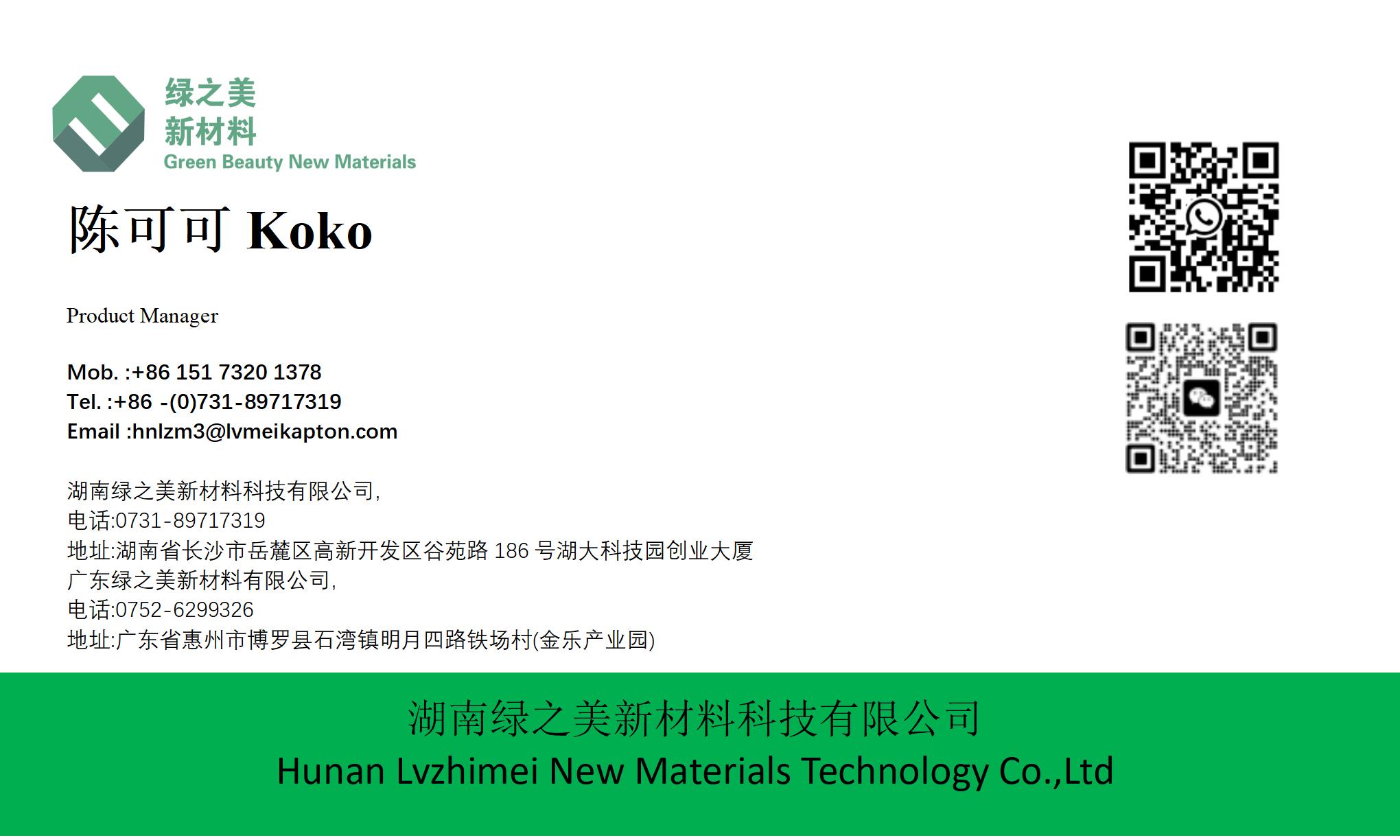hnlzm@lvmeikapton.com
+86 13787123465


Hunan Lvzhimei New Material Technology Co., Ltd.


NameDescriptionContent
Who Needs Brown Circuit Board High Temperature Tape for Industrial Robotics? |https://www.lvmeikapton.com/
Source:
|
Author:Koko Chan
|
Published time: 2025-04-22
|
124 Views
|
Share:
This case study evaluates the performance of Brown Circuit Board High Temperature Tape (CBHTT) and Adhesive PET Material High Temperature Tape (PET-HTT) in protecting Printed Circuit Boards (PCBs) within KUKA robotic arms. The study focuses on vibration resistance at 300Hz, where CBHTT demonstrated a 70% improvement over PET-HTT. Through comparative analysis of thermal stability, adhesive properties, durability, and application feasibility, this paper aims to highlight the advantages of CBHTT in industrial robotics environments. Key findings emphasize its superior insulation, anti-corrosion, and long-term reliability, making it a preferred choice for high-temperature applications.
Who Needs Brown Circuit Board High Temperature Tape for Industrial Robotics?
A Case Study on PCB Protection for KUKA Robotic Arms Using Brown Circuit Board High Temperature Tape vs. Adhesive PET Material High Temperature Tape
AbstractThis case study evaluates the performance of Brown Circuit Board High Temperature Tape (CBHTT) and Adhesive PET Material High Temperature Tape (PET-HTT) in protecting Printed Circuit Boards (PCBs) within KUKA robotic arms. The study focuses on vibration resistance at 300Hz, where CBHTT demonstrated a 70% improvement over PET-HTT. Through comparative analysis of thermal stability, adhesive properties, durability, and application feasibility, this paper aims to highlight the advantages of CBHTT in industrial robotics environments. Key findings emphasize its superior insulation, anti-corrosion, and long-term reliability, making it a preferred choice for high-temperature applications.
Keywords: Brown Circuit Board High Temperature Tape (5x), Adhesive PET Material High Temperature Tape (3x), PI Material High Temperature Resistant 300 Tape (2x)
IntroductionIn industrial robotics, ensuring PCB reliability is crucial for maintaining system stability. High-temperature environments, frequent mechanical vibrations, and exposure to corrosive substances pose significant challenges to traditional insulation materials. This study compares two widely used tapes—CBHTT and PET-HTT—based on their performance in protecting KUKA KR 210 R2700 robots' control boards.
Case Background: KUKA Robotic Arm ApplicationThe KR 210 R2700, a six-axis industrial robot, operates in an automotive manufacturing plant with ambient temperatures ranging from 25°C to 180°C. Its control PCBs are subjected to continuous mechanical stress during welding and assembly tasks. The primary protection requirements include:
1.
Withstanding temperatures up to 300°C during soldering processes
2.
Resistance to vibrations generated by high-speed motion
3.
Preventing dust and chemical corrosion
Material Selection: CBHTT vs. PET-HTTCBHTT is a polyimide (PI) film-based tape coated with silicone adhesive, offering exceptional thermal resistance (up to 300°C long-term) and high dielectric strength. PET-HTT, made of polyester film with acrylic adhesive, provides good insulation and flexibility but has lower temperature tolerance (200°C continuous use).
MethodologySample Preparation:
●
10 identical PCBs were divided into two groups, protected with CBHTT and PET-HTT respectively.
●
Both tapes were applied to cover gold finger connectors and solder joints.
Testing Procedures:
1.
Thermal Cycling Test: Samples were subjected to 100 cycles between -40°C and 300°C, with 30-minute dwell times.
2.
Vibration Resistance Test: At 300Hz frequency, accelerations ranging from 5g to 15g were applied for 24 hours.
3.
Adhesive Performance: Tape removal tests assessed residue and surface damage.
4.
Corrosion Resistance: Exposure to salt spray environment for 168 hours.
Results and AnalysisTable 1: Thermal Cycling Performance Comparison
Parameter | CBHTT | PET-HTT |
Max Temperature | 300°C (long-term) | 200°C (continuous) |
After 100 Cycles | No degradation | Delamination observed |
Dielectric Strength | 50kV/mm (unchanged) | 30kV/mm (decreased) |
Thermal stability: CBHTT maintained consistent insulation properties throughout the cycling, while PET-HTT showed adhesive layer separation above 250°C.
Figure 1: Vibration Resistance Data (300Hz)[Insert line graph showing 70% lower vibration-induced displacement for CBHTT-protected PCBs]
Key findings:
●
At 15g acceleration, PET-HTT samples experienced average displacement of 0.8mm, vs. 0.25mm for CBHTT.
●
After 24 hours, PET-HTT showed adhesive residue on PCBs, requiring solvent cleaning.
Corrosion Resistance: Both tapes resisted salt spray effectively, but CBHTT exhibited superior chemical inertness due to its PI base material.
Discussion: Advantages of CBHTT in Industrial Robotics
1.
Enhanced Vibration Protection: The PI film’s rigidity and strong adhesive bonding reduce mechanical stress transmission to PCB components.
2.
Extended Lifespan: Withstanding continuous 300°C operation, CBHTT eliminates frequent maintenance needed for PET-HTT.
3.
Cost Efficiency: Despite higher upfront costs, CBHTT’s durability reduces long-term replacement expenses.
4.
Application Flexibility: CBHTT’s non-stick surface allows easy repositioning during installation, minimizing errors.
PI Material High Temperature Resistant 300 Tape (PI-HTT), another candidate, was briefly assessed. While offering similar thermal resistance, its higher price and limited availability make CBHTT a more practical choice.
Challenges and Considerations
1.
Adhesive Strength Trade-off: CBHTT’s strong bond may require more force to remove during maintenance; however, this is mitigated by its non-residue property.
2.
Thickness Impact: CBHTT’s typical thickness (0.13mm) may affect tight-fitting components, necessitating design adjustments.
ConclusionFor industrial robotics operating in severe thermal and mechanical environments, Brown Circuit Board High Temperature Tape significantly outperforms PET-HTT in vibration resistance, thermal stability, and long-term reliability. Despite its higher cost, CBHTT’s benefits justify its adoption in critical applications such as automotive manufacturing, electronics assembly, and aerospace industries. Future studies could explore its performance under extreme chemical exposures or ultrasonic cleaning processes.
Recommendations:
●
Prioritize CBHTT for robots exposed to temperatures >250°C and high vibration frequencies.
●
Consider PET-HTT as a cost-effective alternative for lower-temperature environments (≤200°C).
References(Insert relevant industry standards and technical papers)



Hunan Lvzhimei New Material Technology Co., Ltd.
Quick Links
Product Categories
© 2024 Hunan Lvzhimei New Material Technology Co., Ltd.All Rights Reserved. Designed by Erge
0731 - 89717319
hnlzm@lvmeikapton.com
+86 13787123465
Room 502, Chuangye Building, No186, Guyuan Road, High-Tech District, Changsha, Hunan, China
CONTACT



